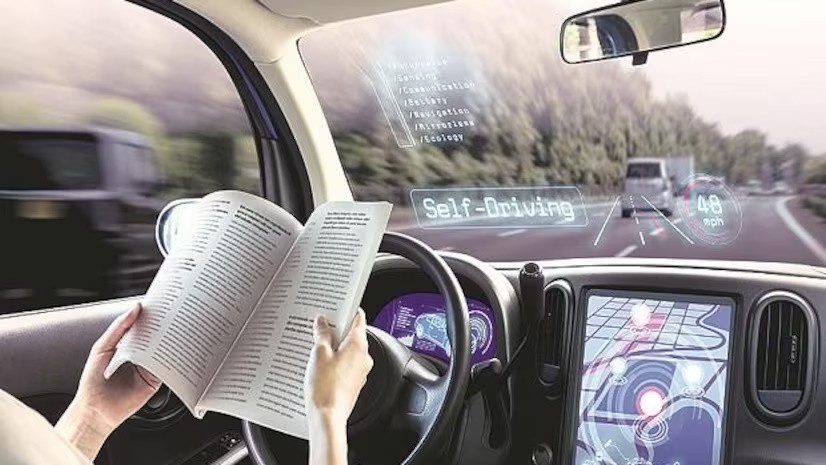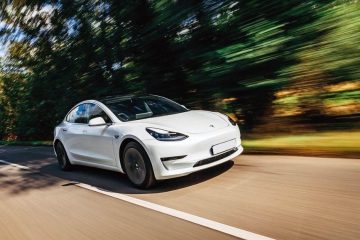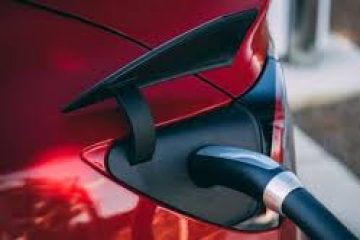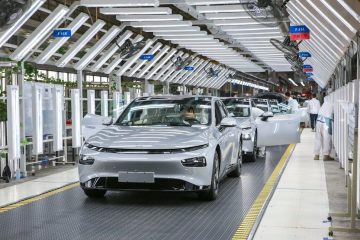The self-driving automobile fleet hits the highways

The streets of cities were traversed by autonomous robotaxis last year. They are now tackling highways. The cars are now offering fully autonomous rides on Phoenix freeways, following their expansion on San Francisco’s local streets last year.
A self-driving car firm called Waymo, which is owned by Google, has just begun testing rides on Phoenix roadways with employees as passengers.
The industry views it as a pivotal step. According to Waymo, allowing cars to drive highway routes can significantly reduce travel times—perhaps by half—and open the door to expanding their business. Robotaxi companies have invested billions in developing this technology, and their future profitability is in jeopardy if they are unable to provide routes like airport services.
In locations like Los Angeles, where freeways are essential for traveling around town, and when transporting passengers to and from airports, freeway rides would probably be the most practical. A number of businesses are also advancing their ambitions to use autonomous vehicles to deliver goods on highways, an area where some executives believe they may achieve a faster return on investment.
More is riding on this than ever before, and there is no room for error. Waymo, one of the first companies to enter the self-driving space, has finally done it after 15 years. The operations will be much more dangerous when driven on highways.
Last October, one of Cruise’s autonomous vehicles pulled a woman, who had been struck by another car, roughly 20 feet. As a result, the business, which is majority-owned by General Motors, lost its license to operate in San Francisco. Not long after that, the company stopped all activities across the country.
Waymo co-CEO Tekedra Mawakana recently stated at a tech conference that the city of Los Angeles, which is heavily populated by freeways, is a market that might be worth $2 billion. The firm was able to secure permission from California authorities this month to begin charging for autonomous vehicle rides on freeways in the San Francisco Bay Area and portions of Los Angeles.
You’re witnessing us take the necessary steps to establish a lucrative firm—a sustainable, long-term successful enterprise, as Mawakana put it.
In order to iron out any bugs before rolling out to the public, Waymo is currently only letting staff take autonomous trips on the highway. The business was tight-lipped about the exact date of the expansion. The trucking-focused autonomous technology startup Aurora intends to launch its fleet of driverless vehicles onto Texas highways this year.
Carnegie Mellon University electrical and computer engineering professor Raj Rajkumar, who focuses on autonomous vehicles, remarked that this demonstrates their confidence. He also mentioned that Waymo and similar self-driving car startups still face challenges in handling unusual freeway driving situations.
Waymo has made sure its vehicles are prepared for any situation that may arise. However, it’s not easy to foresee every potential problem. Unexpected dangers abound on city streets for the autonomous vehicles, including individuals who purposefully dash out in front of them to test their stopping capabilities and those who place cones on their hoods to obstruct their sensors. When an accident occurs, the passenger has no say over what happens to the vehicle.
People in San Francisco have a mixed reaction to robotaxis, with some praising the cars and others critiquing their stalling and traffic congestion.
Similar to what happened with Cruise not long ago and Uber many years ago, Waymo or Aurora’s entire operations might be called into question by a single catastrophic accident. After a lady was murdered in a 2018 test near Phoenix by one of its 40 mph self-driving cars, Uber sold off its entire self-driving business. Following a collision between two Waymo cars and a pickup truck being towed backward in Phoenix last month, Waymo issued its first-ever recall due to a software error.
Autonomous vehicles really have it easier on highways than in urban areas, according to specialists in the field. You won’t have to worry about people or crossing streets as much.
According to David Zuby, chief research officer for the Insurance Institute for Highway Safety, driving on U.S. roadways is among the safest options available, even for humans. However, the repercussions are more severe due to the high speeds at which accidents happen. There is a higher probability of injuries or deaths occurring.
Getting on and off ramps at freeways is a major headache for the drivers. They must multitask and act swiftly in response to ever-changing conditions, just like the robotaxis did when it attempted an unprotected left turn on city streets.
Waymo reports that the rollout on Phoenix roadways has been mostly trouble-free thus far. Additionally, unlike the problem that happened on local streets, the vehicles have not stalled in the center of the freeway and have been able to effectively negotiate on and off ramps.
It was annoying for other drivers since the cars couldn’t always speak with each other and would occasionally halt in the middle of the road when they were confused or had problems.
It won’t happen on Waymo’s fast-moving roadways, according to Sugandha Sangal, a product manager at the company. A backup sensor system is available in case the primary one stops working.
There have been a few mishaps involving Waymo vehicles on highways during the past year. According to official documents, one of the vehicles in San Francisco was involved in an accident in March when it was transferring from Interstate 280 to Interstate 380. The vehicle sustained damage after colliding with some tire shreds.
On the same day, a Waymo was autonomously navigating San Francisco’s Bayshore Boulevard when its safety driver—a human occupant who can take control in an emergency—slammed into a stationary vehicle in the far right lane. Damage was sustained by both vehicles.
Waymo stated that establishing trust with the communities where they operate is a priority, but they declined to share further specifics regarding the occurrences.
In the years following its 2017 founding, the Pittsburgh-based driverless technology company Aurora searched for sensor technologies that may enable cars to perceive activity from several feet away.
“You can’t just stop in the lane if something breaks at 75 miles an hour,” Aurora CEO Chris Urmson stated while driving on the freeway.
Aurora acquired Blackmore, a Montana-based firm working on a unique sensing technology, in 2019. Urmson announced that Aurora’s autonomous driving technology has improved to the point where it can detect things over 400 meters away.
Having previously led Google’s self-driving car project, Urmson stated that that was the gamble that allowed them to move into trucking.
However, they have encountered a few obstacles along the way. A vehicle traveling about 65 miles per hour sideswiped a truck that had Aurora sensors installed last year.
It would have been quite difficult to prevent the catastrophe, according to Urmson, who stated that the vehicle performed everything correctly. He plans to eliminate safety drivers from his truck fleet by the end of the year. Some of our rivals in the industry claim they are still a few years away.
Public trips in Las Vegas will be launched this year by Zoox, an Amazon company; freeway driving will be available in the far future. Executives within the organization are aware of its potential even at this late stage.
According to Bryan O’Sullivan, a senior vice president at Zoox, “things change drastically” once they are able to enable driving on, example, the 101 route in California, which is also known as Pacific Coast Highway.
Those in the know say that Cruise had no plans to use the road anytime soon before it lost its permits. Immediate goals for the organization included penetrating new urban areas and honing in on specific local streets.
On the other hand, some Phoenix locals are looking forward to riding in a Waymo on the highway.
When Waymo began offering passenger rides in downtown Phoenix in 2022, a 23-year-old local named Joel Johnson was among the first members of the public to go on board. His Waymo adventures, which he records on his 10,000-subscriber YouTube account JJRicks, span years and count dozens.
Johnson stated that we have progressed from decent but jerky automobiles with safety drivers to exceedingly smooth and empty cars. When they announce, “We’re ready for freeway,” I eagerly await their response.







